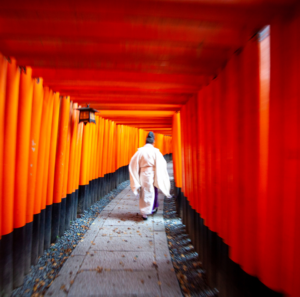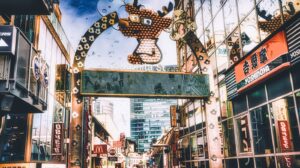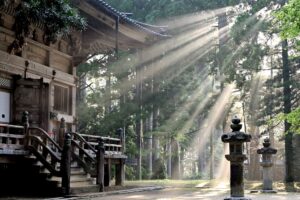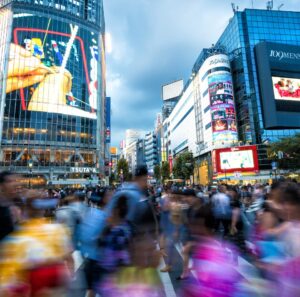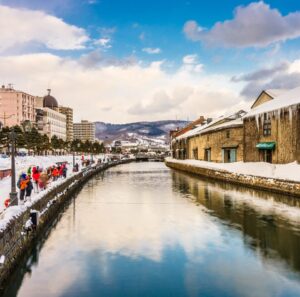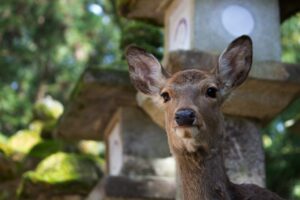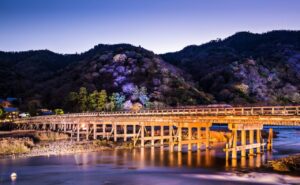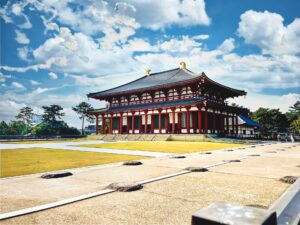Welcome to Kiyomizu-dera, Kyoto’s Iconic Temple
Overview
Kiyomizu-dera, one of Kyoto’s most famous temples, is renowned for its rich history and numerous fascinating episodes. Here’s a guide to help you understand and appreciate this historic site:

History
• Founding: Kiyomizu-dera was founded in 778 AD, towards the end of the Nara period, by the monk Enchin. The temple’s name, which means “Pure Water Temple,” is derived from the clear waters of the Otowa Waterfall that runs through the temple grounds.
• Reconstruction: The current main hall was reconstructed in 1633 during the early Edo period under the orders of Tokugawa Iemitsu. Since then, Kiyomizu-dera has survived numerous wars and natural disasters to remain in its present form.
• Cultural Heritage: In 1994, Kiyomizu-dera was designated as a UNESCO World Heritage site as part of the Historic Monuments of Ancient Kyoto. Many of its buildings, including the main hall and the stage, are designated as Important Cultural Properties.
Interesting Episodes
• Jumping Off the Stage: The Japanese phrase “to jump off the stage at Kiyomizu” is akin to the English phrase “to take the plunge.” It refers to making a bold decision and originates from an Edo-period practice where people believed that if they survived a 13-meter jump from the Kiyomizu stage, their wish would be granted. Historical records suggest a survival rate of about 85%.
• Otowa Waterfall: The Otowa Waterfall, from which Kiyomizu-dera derives its name, is divided into three streams. Visitors believe that drinking from these streams grants health, longevity, and success in studies. Using ladles, people drink from the waterfall and make wishes.
• Kannon Worship: The temple enshrines a statue of Kannon, the thousand-armed goddess of mercy, making it a significant site for Kannon worship. Pilgrims and devotees visit Kiyomizu-dera to pray for compassion and blessings.
• Significant Festivals: Kiyomizu-dera hosts numerous important festivals and events throughout the year. One of the most famous is the special night-time illumination, held in spring and autumn, where the temple and its surroundings are beautifully lit up, creating a magical atmosphere.
Highlights
• Kiyomizu Stage: The stage, extending from the main hall, is a wooden platform that offers stunning views of Kyoto. The structure is built without the use of nails and stands on 13-meter-tall wooden pillars.
• Main Hall (Hondo): Designated as a National Treasure, the main hall houses the temple’s primary object of worship, the statue of Kannon. The architectural grandeur of the hall is awe-inspiring.
• Otowa Waterfall: The pure waters of the Otowa Waterfall are accessible to visitors, who use ladles to drink and make wishes, seeking the blessings of health, success, and longevity.
• Three-storied Pagoda: This brightly colored pagoda is one of Kiyomizu-dera’s iconic structures and a popular spot for photography.
• Jishu Shrine: Located within the temple grounds, Jishu Shrine is dedicated to the deity of love and matchmaking. Visitors often pray for success in finding love and maintaining relationships.
Practical Information
• Access: Kiyomizu-dera is easily accessible from Kyoto Station by bus or taxi. A pleasant walk from the bus stop through the historic streets of Higashiyama leads to the temple.
• Hours and Admission: The temple is open year-round, typically from 6:00 AM to 6:00 PM (hours may vary seasonally). An admission fee is required to enter the temple grounds.
Experience the rich history, stunning architecture, and spiritual significance of Kiyomizu-dera, one of Japan’s most treasured temples. Enjoy your visit to this remarkable cultural landmark!




